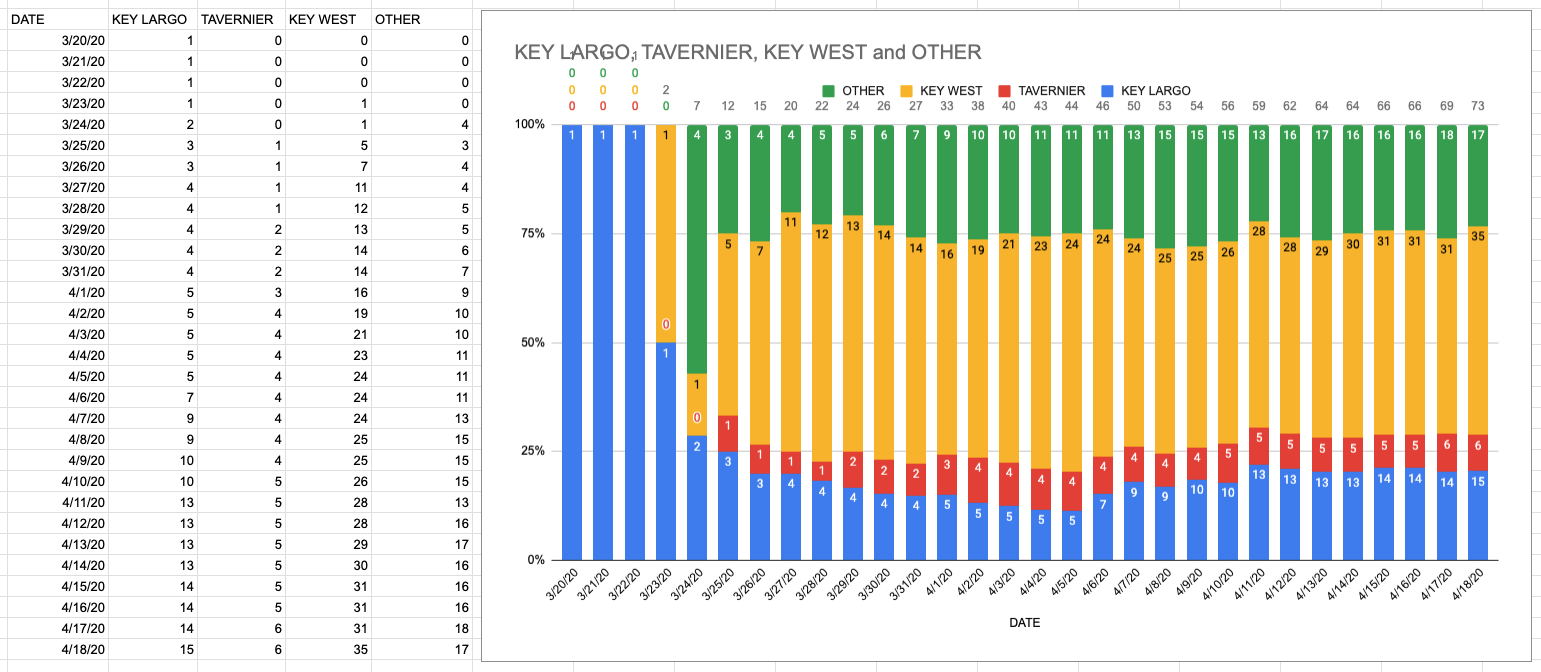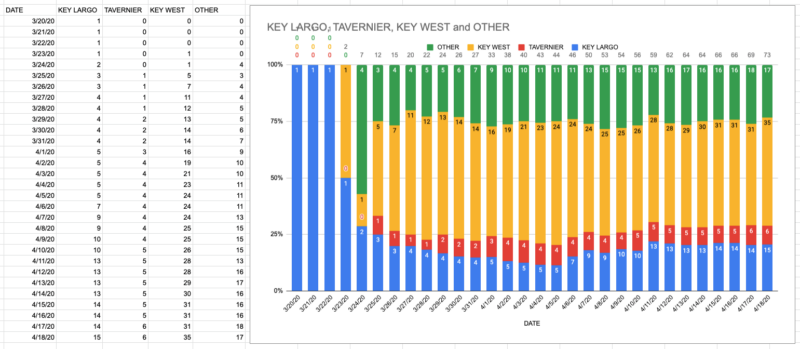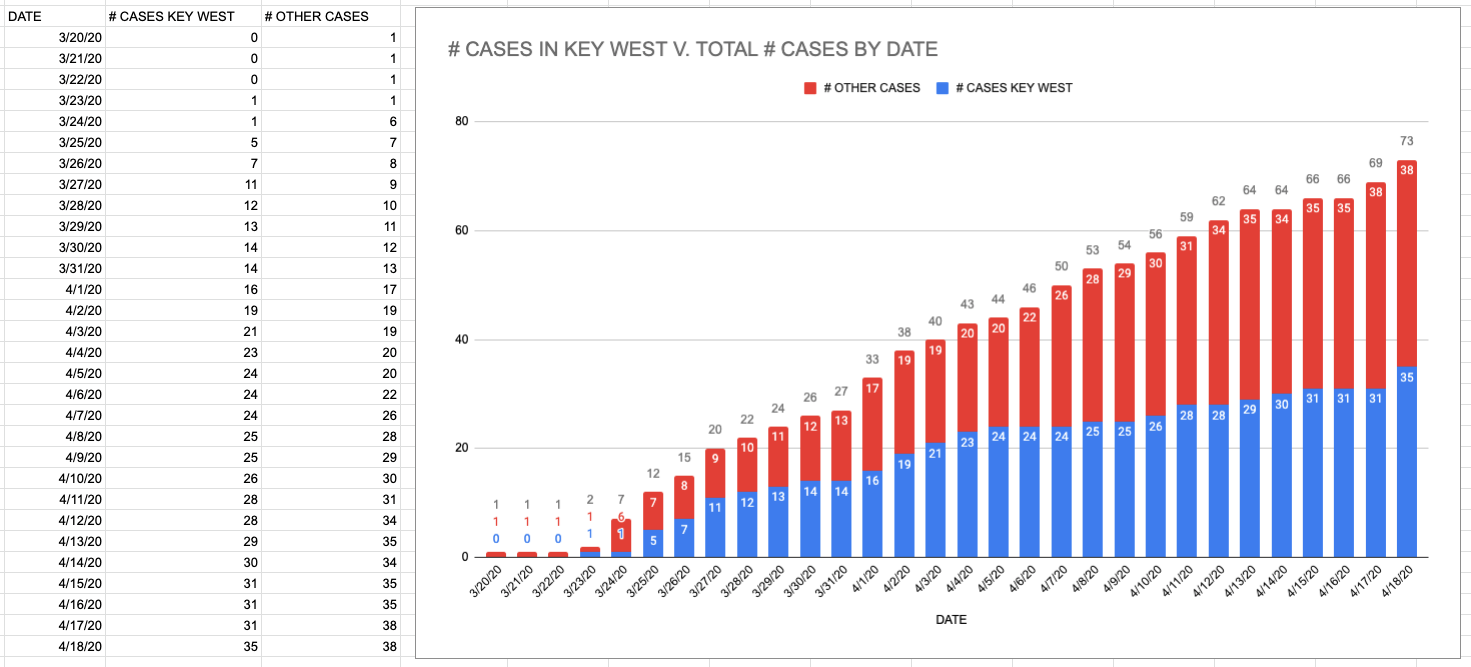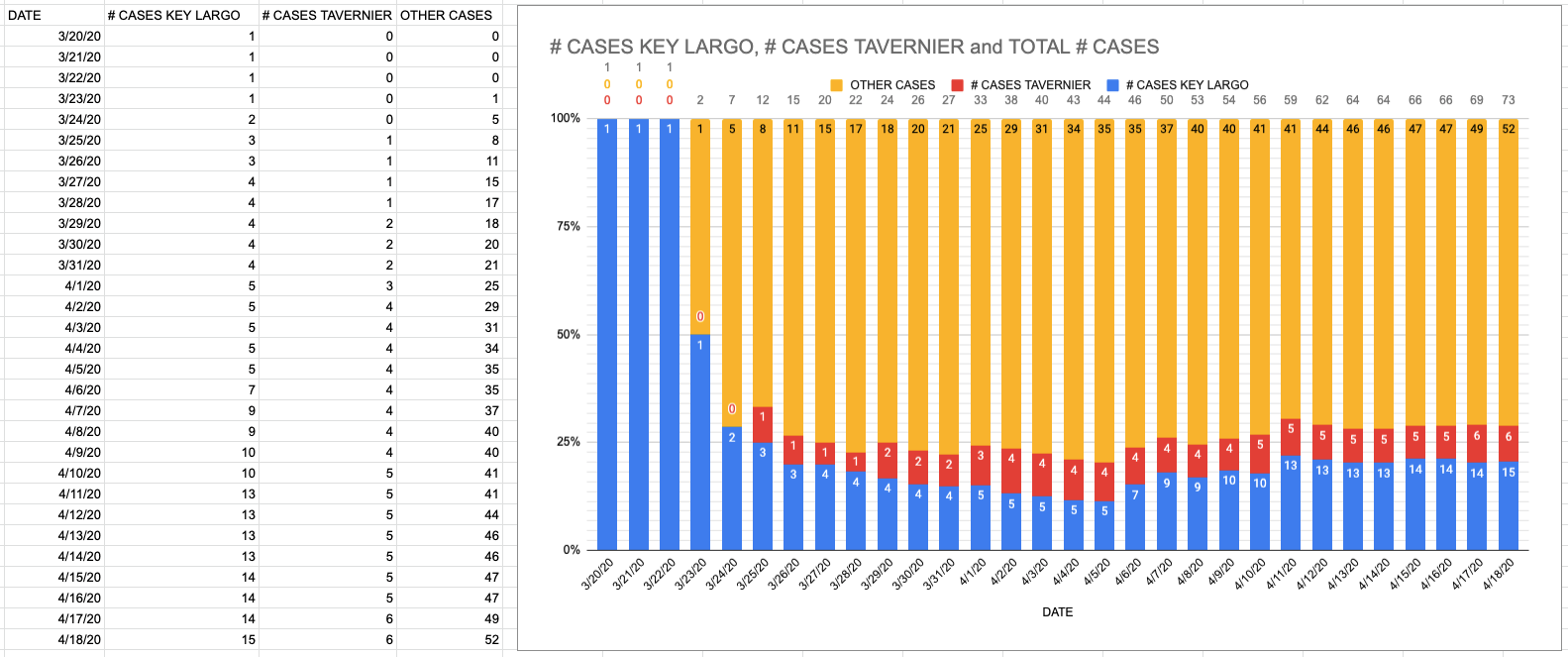GRAPHING COVID-19: MOST PREVALENT IN KEY WEST AND THE UPPER KEYS ISLANDS
by Naja Girard
Several readers have asked us to plot the numbers for specific areas in the Keys that are seeing the largest number of positive novel coronavirus cases.
These areas are particularly vulnerable to COVID-19 compared with other areas of the Keys for different reasons. Key West, of course, with its larger population and which had thousands of visitors coming in daily by air, car and boat would be expected to have the largest share of positive cases and does.
But the Upper Keys areas of Key Largo and Tavernier have a relatively high percentage of cases compared to other islands. Those Upper Keys areas were seeing a lot of daily trips from Miami, Florida’s COVID-19 hotspot, prior to visitor checkpoints being instituted on the 18-Mile Stretch and Card Sound Road. Essential workers and property owners are an exception to the “no-visitor” rule and may account for some continued travel between Miami and the Upper Keys.
Some observations as of April 18th: Key West residents account for 48% of total infections but only 33% of the total population of Monroe County. The Upper Keys areas of Key Largo, North Key Largo and Tavernier account for 29% of the infections but only 17% of the population of Monroe County.
Not plotted in graphs below: Marathon residents account for 7% of total infections (with only 5 positive cases) and make up 12% of the Florida Keys population. Summerland, Key Colony Beach and Cudjoe each have just 1 resident who has been reported positive for COVID-19 by the FDOH. Islamorada has 2 reported cases.
The relative populations from the United States Census Bureau:
Key West: 25,085
Total North Key Largo, Key Largo, Tavernier: 13,206 (Key Largo: 9,954, North Key Largo: 990, Tavernier: 2,260)
Marathon: 8,737
Monroe County: 75,027
[Note: The graphs below are not “official” government graphs. They were created by The Blue Paper using data provided by FDOH. The “OTHER” category includes the other islands but also includes non-residents who may have been infected and may still be residing in Key West, Key Largo or Tavernier. FDOH does not provide information about where in the Keys the 7 non-resident patients were living when they were infected with COVID-19.]





